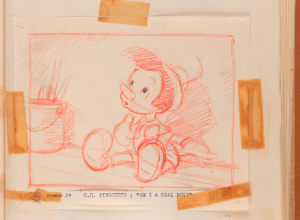Archive of First-Person Revolutionary War Accounts Donated to the Museum of the American Revolution

Samuel Gerock’s pocket-sized almanac for the year 1777
The wartime papers and drumhead wallet of an officer in the German Regiment of the Continental Army once stored on the porch of a descendant’s home and later featured on PBS’s Antiques Roadshow have been donated to the Museum of the American Revolution.
Samuel Gerock lived in Baltimore, Maryland during the war but settled in New Bern, North Carolina following his service. His wartime papers include letters Gerock received from fellow officers and a pocket almanac in which he wrote down notes about his military experiences. These first-hand accounts now serve as a window into the politics of the Continental Army in its early days as it grew into a professional fighting force.
Gerock’s papers also provide valuable information about little-known battles that took place in New Jersey in 1777 as part of a 'Forage War' between the British and the Revolutionaries.
Serving with his regiment during what historians call the 'Ten Crucial Days', Gerock fought at the Second Battle of Trenton and the Battle of Princeton in early 1777. He also participated in skirmishes in northern New Jersey, including the Battle of Spanktown which took place near what is now Woodbridge, New Jersey on February 23, 1777, and which Gerock sketched the battle in his pocket almanac. In 1818, Gerock presented the papers as proof of his military service for his pension application, folded neatly inside of a wallet made from a drumhead played by one of his comrades during those crucial days.
The papers reveal for historians today more details about what the experience was like for a junior officer in the Continental Army during some of the most trying days of the Revolutionary War.
“Gerock’s testimony, paired with the fact that these documents survive, is rare and historically valuable,” said Matthew Skic, Senior Curator for the Museum. “His papers not only showcase new information about the Revolutionary War, but they help to reveal the various ways veterans proved their service afterward in order to receive financial assistance.”
The artifacts were donated by Gerock’s great-great-great granddaughter Nanette Reid Osborne of Greensboro, North Carolina, alongside her brother, Dr. Robert Kent Reid of Las Vegas, New Mexico, in memory of their mother, Virginia Gerock Reid. Osborne said she found out about the artifacts as a teenager and grew up thinking everyone had such Revolutionary War items lying around the house or in their family. But when her husband, Jim Osborne, pushed her to apply to have them appraised on Antiques Roadshow she could have never guessed that the papers and wallet her parents and grandparents had stored on porches and in closets could be the source of such remarkable historical accounts.
“I've always felt like these objects shouldn't be stuck in a drawer somewhere,” Osborne said. “I didn’t know that people would find them interesting, but they do, and I’m just really happy that we were able to donate them to the Museum so as many people as possible can see and learn from them.”
Samuel Gerock’s wallet and almanac are on display at the Museum of the American Revolution in the second-floor Oneida Indian Nation Atrium.















